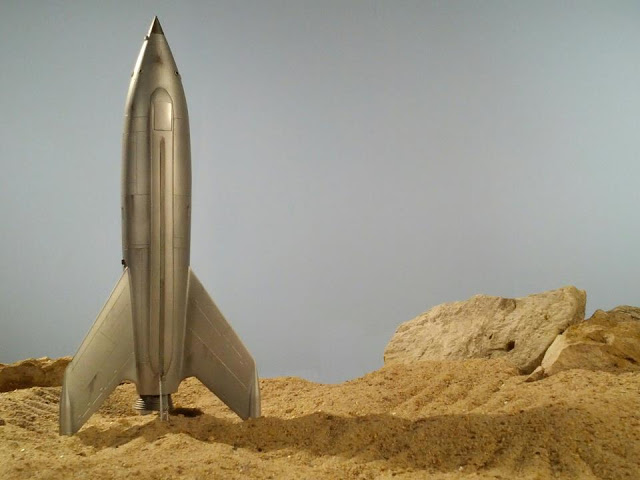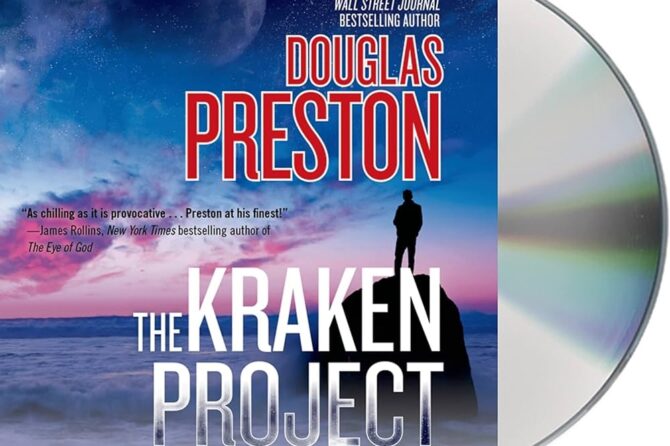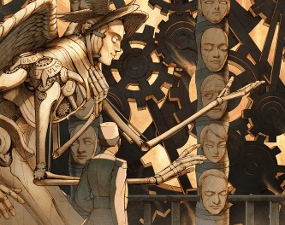 It’s 1939 America and the Black community’s greatest minds are searching for the solution to the “Negro Problem.” One answer? Build a spaceship, fill it with all of America’s Negroes, and fly to Mars, with the help of George Washington Carver’s peanut/sweet potato–based rocket fuel. And, like many plans, this one goes awry. Word gets out that Negroes are leaving and White folk get angry, so the departure is moved up to ASAP.
It’s 1939 America and the Black community’s greatest minds are searching for the solution to the “Negro Problem.” One answer? Build a spaceship, fill it with all of America’s Negroes, and fly to Mars, with the help of George Washington Carver’s peanut/sweet potato–based rocket fuel. And, like many plans, this one goes awry. Word gets out that Negroes are leaving and White folk get angry, so the departure is moved up to ASAP.
The intrepid team includes Dr. Warrington Avery, the physicist who designed and built the spacecraft (Director Kevin Willmott); Dr. Beneatha Avery, astronomer and lovely daughter of Dr. Avery (Danielle Cooper); Captain Race “Ace” Johnson, the best Negro pilot in the world and all-around chauvinist (Tosin Morohunfolo); and Strom, a robot that speaks with a colloquial Southern accent.
The team heads to Mars, but their ship gets pulled into a wormhole. They crash land on present-day Earth, in a deserted part of Kansas City. As in the Wizard of Oz, the film changes from black-and-white to color, seemingly to contrast the dark past with the promise of a bright future. Dr. Avery claims the planet on behalf of all the “poor, oppressed, and colored people of the world,” and then tells Strom to stay behind and fix the ship while they search the planet. Looks like the struggle is still real for nonbiological life forms.
 After stumbling into a barn, being mistaken for illegal immigrants, and hauled into the back of a truck, the three explorers escape. They make it to a convenience store, see a man wearing sagging pants, and mistakenly assume he’s malnourished and controlled by messages in his headphones. After boarding a bus and correctly “schooled” in the ways of the modern-day world by two rappers, B-12 and Mama Mau-Mau, played by Trai Byers and John McCluskey, they go to a local college and learn what’s happened since they left Earth in 1939.
After stumbling into a barn, being mistaken for illegal immigrants, and hauled into the back of a truck, the three explorers escape. They make it to a convenience store, see a man wearing sagging pants, and mistakenly assume he’s malnourished and controlled by messages in his headphones. After boarding a bus and correctly “schooled” in the ways of the modern-day world by two rappers, B-12 and Mama Mau-Mau, played by Trai Byers and John McCluskey, they go to a local college and learn what’s happened since they left Earth in 1939.
The main characters play well off of each other, especially as they try to make sense of their new world. Strom, modeled after Dr. Carver’s old slave master, provides Stepin Fetchit comic relief during some of the more serious moments of the film. The scene with Mau-Mau, who is White, teaching Race how to walk “Black” is reminiscent of Richard Pryor and Gene Wilder in Silver Streak, with reversed roles. Walter Coppage plays an “Uncle Tom” villain you love to hate as Howard Horn, a man opposed to the launch, as well as his own great grandson, Congressman Howard Horn, who wants to take back the “victim welfare entitlement state.”
 A satire, Destination: Planet Negro plays off of the tropes of the classic science fiction movies from the 1950s: Rocket ships, robots with accordion arms, forward-thinking scientist, and lovely daughter who falls for the ship’s captain (Forbidden Planet anyone?). Many of the jokes are delivered through the mistaken perceptions of the time travelers and the evolution of the “N-” and “S-” words, but there are also plenty of moments for today’s viewers on which to reflect about race, politics, justice, today’s entertainment choices, and the future.
A satire, Destination: Planet Negro plays off of the tropes of the classic science fiction movies from the 1950s: Rocket ships, robots with accordion arms, forward-thinking scientist, and lovely daughter who falls for the ship’s captain (Forbidden Planet anyone?). Many of the jokes are delivered through the mistaken perceptions of the time travelers and the evolution of the “N-” and “S-” words, but there are also plenty of moments for today’s viewers on which to reflect about race, politics, justice, today’s entertainment choices, and the future.
The movie guides the viewer—and the time travelers—along the path of societal change from the 1930s, and the movie sometimes lectures more than entertains. However, the comic one-liners and sight gags quickly diffuse those moments, and the audience is soon hurtling its way toward the twist ending.
“My overall message has to do with looking at how far we have come racially and how far we still have to go. One of the more subtle messages in the film is how African Americans have always had to love the country for its potential and not its reality. Post-Obama, we are just now approaching a time where we can embrace the nation’s actuality,” Willmott said.
 Fans of Willmot’s previous movie, mockumentary C.S.A.: The Confederate States of America, will find the same tongue-in-cheek comedy, but with a different message and feel.
Fans of Willmot’s previous movie, mockumentary C.S.A.: The Confederate States of America, will find the same tongue-in-cheek comedy, but with a different message and feel.
“CSA was an attempt to satire and reveal how the South did win the Civil War. I looked at our actual history and tried to show the other side of that legacy in terms of how it affected African Americans and others,” Willmott said.
Mr. Willmott has just completed the film, Jayhawkers, about Wilt Chamberlain’s time at Kansas University. And shooting starts next summer on Emmett Till’s Black Body, about the murder of teenager Emmett Till and how it created the modern Civil Rights movement.
Read more about Destination: Planet Negro at www.planetnegro.com.











Yes, it has a very similar premise. However, we never found out what happened to the Blacks who left Earth in Bradbury’s story. In Destination: Planet Negro, at least, the story addresses that, but also weaves in a sense of wonder as to how B-12 managed to get rid of the conservative party that supported Howard Horn.
Reminds me of Ray Bradbury’s “Way Up in the Middle of the Air.” Which interestingly enough was published in 1950 by Ray Palmer in his magazine “Other Worlds”.